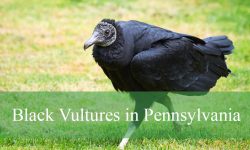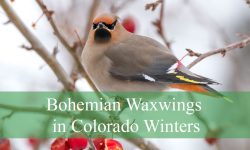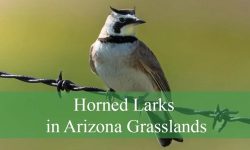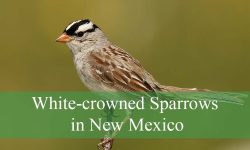Golden-crowned kinglets are some of the smallest yet most resilient winter birds found across Ohio’s forests, parks, and suburban edges. Their tiny size, bright head stripe, and rapid movements give them a presence far larger than their physical form suggests. Even on the coldest days, these birds continue flitting through branches, surviving conditions that challenge far bigger species.
Ohio’s winter landscapes provide a unique window into their behavior. As hardwood forests lose their leaves and evergreen groves remain dark and quiet, kinglets move restlessly through the canopy, delivering high-pitched calls that break the winter silence. Many Ohio residents never notice them, yet they are active throughout the season, revealing secretive patterns and survival strategies that often go unnoticed.
This article uncovers the truth about golden-crowned kinglets in Ohio, diving into their feeding habits, winter endurance, anatomy, migration, habitat selection, and interactions with the state’s diverse wildlife.
Understanding Golden-Crowned Kinglets in Ohio
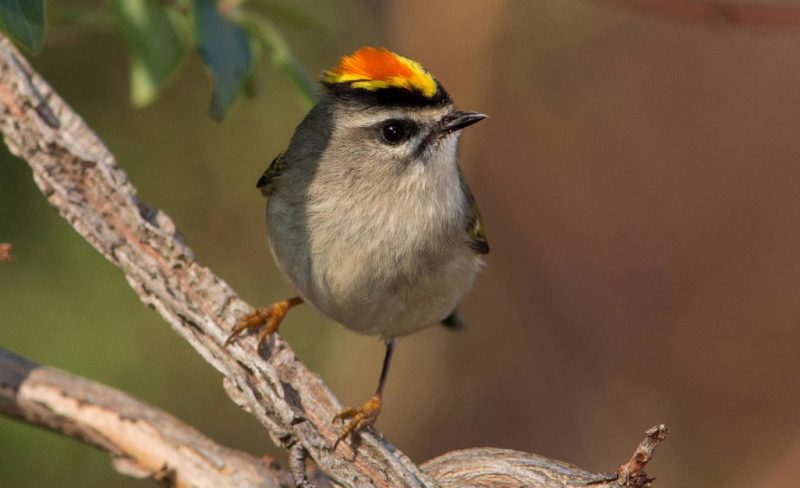
What Golden-Crowned Kinglets Really Are
Golden-crowned kinglets are extraordinarily small songbirds—so tiny that they often weigh less than a U.S. penny. Despite their miniature size, they carry an unmistakable appearance. A bright, fiery stripe of yellow or orange crowns the top of their head, bordered by thin black lines that give their face a sharp, expressive look. The rest of their body is a soft mix of olive, gray, and pale tones that blend seamlessly into the forest canopy.
Their appearance may suggest fragility, but these birds are built for survival. Kinglets tolerate temperatures that drop far below freezing, enduring conditions that many larger birds cannot. Their bodies operate at a rapid metabolic pace, burning energy constantly to maintain internal heat. This high energy turnover forces them to stay active almost every minute of daylight, hopping, fluttering, and probing branches in an endless search for food.
Their social tendencies help them survive Ohio’s variable winter conditions. Instead of traveling alone, kinglets often join mixed-species flocks made up of chickadees, nuthatches, downy woodpeckers, and titmice. These groups offer safety in numbers. Each species contributes to early predator detection, and their different feeding styles allow them to search separate zones of the forest without competing. Kinglets stay connected to these flocks through thin, high-frequency calls—light whistles that drift across winter woods and guide the flock as it moves.
Why Ohio Supports Them Year-Round
Ohio’s landscape provides an exceptional mix of habitats that golden-crowned kinglets depend on throughout the year. Large tracts of mixed hardwood forest—from beech and maple stands to oak and hickory slopes—give them extensive foraging grounds during migration and mild winters.
Even more important are the state’s evergreen pockets. Spruce groves, fir plantations, and hemlock ravines offer dense foliage that protects kinglets from wind and provides reliable winter insect populations. Many of these conifer stands were planted decades ago for erosion control or wildlife management, and today they form essential winter refuges for kinglets.
Ohio winters, while cold, often fluctuate between harsh freezes and mild breaks. These brief warm spells activate insects hiding within evergreen needles, bark crevices, and understory webs. Kinglets rely heavily on these micro-bursts of insect activity, which allow them to maintain their high caloric needs even in January and February. Without this predictable pattern of warming intervals, kinglet survival would be far more challenging.
Where They Occur Across the State
Golden-crowned kinglets appear in nearly every region of Ohio, but their concentrations vary depending on habitat and temperature.
They are particularly common in the northern part of the state, especially around the Lake Erie marshes, Cleveland Metroparks, and Toledo-area forests where old-growth hardwood stands mix with colder evergreen pockets. These areas provide stable winter feeding grounds and sheltered roosting options.
State forests and county parks that include conifer plantings—often rows of spruce or fir put in decades ago—support some of the most dependable winter populations. Kinglets use these patches throughout the cold months, staying close to the dense canopy where insects overwinter.
Suburban areas with mature ornamental evergreens offer microhabitats that kinglets use freely. Neighborhoods lined with hemlocks, blue spruce, and Norway spruce often host these birds during cold spells, even if homeowners never notice them fluttering at the tree tips.
Wetlands and ravines also attract wintering kinglets. Moist air and thermal protection from steep terrain allow insects to survive in higher numbers, and kinglets quickly locate these microhabitats during warm afternoons.
Their presence across Ohio fluctuates daily. On mild, sunny days, they disperse widely through forests. During cold snaps, they cluster tightly in conifer patches where temperatures are more stable.
Hidden Behaviors Most People Never Notice
Their Constant Movement Is a Survival Strategy
Golden-crowned kinglets rarely pause for more than a second. Their continuous fluttering, hovering, and rapid branch-to-branch movement reflect a biological necessity. These birds burn calories at an astonishing rate, and every moment must be spent searching for tiny prey that fuels their internal furnace.
They explore branches with methodical urgency, inspecting twigs, bark splits, spider webs, and needle clusters for insects, eggs, and larvae. Their short hovering bursts—which look like tiny hummingbird imitations—allow them to access prey hanging beneath branches or hidden inside needle bundles.
This constant motion is not a sign of restlessness but an evolved survival tactic. If a kinglet stops feeding even briefly in cold weather, it risks dropping below the threshold needed to maintain body heat.
Their High-Pitched Calls Keep Flocks Connected
Golden-crowned kinglets produce some of the highest-frequency calls of any North American songbird. Their thin, glassy “tsee-tsee-tsee” notes drift across winter forests, often going unnoticed by human ears but carrying clearly to other kinglets.
These calls serve as coordination signals. They help individuals maintain awareness of the group’s movement, warn of predators, and communicate feeding success. Even while engrossed in foraging, kinglets continue to trade rapid calls that keep the flock united.
These simple vocal patterns form a communication network that maintains flock cohesion in dense vegetation or low-visibility winter conditions.
Their Nighttime Roosting Is Remarkably Efficient
Surviving the night is one of the greatest challenges for golden-crowned kinglets. When temperatures plummet, these birds seek dense evergreen branches that shield them from wind and retain slightly warmer air near the trunk.
Kinglets sometimes engage in a rare behavior—huddling. Two or more birds will press closely together, effectively sharing body heat and reducing the energy required to stay warm through the night. This tactic is seldom observed during the day, making it one of their best-kept winter survival secrets.
Choosing the right roost site is critical. A poorly sheltered branch could expose the bird to lethal wind chills, while a well-protected one can mean the difference between survival and hypothermia.
Anatomy Built for Winter Survival
Dense, Heat-Trapping Plumage
Golden-crowned kinglets have some of the most efficient insulating plumage relative to their size. Their feathers form multiple overlapping layers that trap warm air against the skin, functioning like a built-in thermal jacket.
This insulation remains flexible, enabling the birds to maneuver easily through tight evergreen vegetation. Even when temperatures drop far below freezing, kinglets maintain enough warmth to continue their demanding foraging routine.
A Bill Designed for Tiny Prey
Their fine, needle-like bill is adapted perfectly for handling the tiny prey that sustains them through winter. It allows precise probing into tight crevices, helping them extract insects that other birds cannot reach.
Because many winter insects are minuscule or hidden deep within evergreen foliage, this precision is essential. Without their specialized bill, kinglets would struggle to maintain the high intake needed for survival.
Strong Muscles and Rapid Metabolism
Kinglets maintain rapid wingbeats and constant motion thanks to strong pectoral muscles and a metabolism that burns energy at incredible speed.
This high metabolic rate enables them to generate internal warmth even on the coldest days, but it also forces them to forage almost continuously. Their bodies have evolved to strike a delicate balance between energy gain and energy loss in winter conditions.
Feeding Habits Across Ohio Winters
Insect-Driven Diet
Even when snow blankets the forest, golden-crowned kinglets continue to feed primarily on insects. They target spider eggs, caterpillar larvae, overwintering beetles, scale insects, and tiny arthropods hidden in evergreen branches.
They meticulously search every part of a tree—tips of needles, undersides of branches, and thin bark layers—ensuring no potential food source goes unnoticed.
Feeding in Mixed-Species Flocks
Joint foraging with chickadees and nuthatches allows kinglets to benefit from shared vigilance. While nuthatches inspect tree trunks and chickadees examine mid-level branches, kinglets focus on needle clusters and outer canopy edges.
This division of feeding zones minimizes competition and increases total food discovery for the entire group.
Opportunistic Winter Foraging
Kinglets adjust their foraging height and method depending on temperature. On mild days, insects become active closer to the ground, and kinglets descend accordingly.
During frigid mornings, insect activity is highest in dense evergreen canopies where temperatures remain slightly warmer, so kinglets stay near the tree tops until conditions improve.
Nesting and Breeding (Outside Ohio Winters)
Golden-crowned kinglets leave Ohio for breeding grounds in the boreal and northern Great Lakes forests. Their nests—a tightly woven, hanging cup suspended near conifer branch tips—are masterpieces of insulation.
Despite their tiny bodies, kinglets lay surprisingly large clutches of six to nine eggs. Both parents help feed the young, relying heavily on summer insect abundance.
Golden-Crowned Kinglets Across Ohio Landscapes
Northern and Eastern Forests
These broad forests offer consistent winter food and shelter, particularly in areas where conifers mix with hardwood stands.
Suburban Evergreen Plantings
Neighborhood spruces and hemlocks attract kinglets during cold spells. They move quietly through these trees, often going completely unnoticed by residents.
Lake Erie Region
Lake Erie’s moderating influence creates slightly warmer microclimates, allowing overwintering insects to persist longer—ideal for kinglets.
Wetlands and Ravines
Sheltered ravines and moist lowlands harbor insects even in winter. Kinglets frequent these areas during warm midday hours.
Seasonal Rhythms in Ohio
Early Winter Arrival
Most kinglets arrive in late fall, merging into mixed flocks within days. Their numbers climb steadily as temperatures drop.
Midwinter Adaptations
During the coldest weeks, kinglets concentrate in the densest conifer stands, conserving energy by minimizing exposure to wind.
Late Winter Movement
As insects increase and daylight expands, kinglets spread broadly across forests before migrating north for breeding.
Interaction With Other Wildlife
Birds
Kinglets interact regularly with chickadees, titmice, and woodpeckers. Their flocking partnerships enhance feeding and predator detection.
Sharp-shinned hawks occasionally target these small flocks, forcing kinglets to rely on rapid maneuverability.
Mammals
Squirrels and other mammals shaking branches often dislodge insects, accidentally aiding kinglet foraging efforts. Otherwise, interactions are minimal.
Insects
Kinglets consume vast numbers of overwintering insects, directly influencing winter arthropod populations and reducing pest pressures before spring arrives.
Myths and Misconceptions
Myth: Kinglets Cannot Survive Harsh Winters
Kinglets are among the continent’s most cold-adapted small birds, equipped with remarkable winter endurance strategies.
Myth: They Only Live in Deep Forests
Kinglets thrive wherever evergreen cover and winter insects exist—even in suburban neighborhoods.
Myth: Their Calls Are Inaudible
Their calls are high-pitched but not silent. Many adults simply cannot detect their frequency range.
Ecological Importance
Insect Population Control
By consuming eggs and larvae, kinglets help regulate insect populations before spring emergence.
Winter Forest Activity
Their constant movement adds life and complexity to winter forests, supporting healthy mixed-flock dynamics.
Indicators of Forest Health
Stable kinglet numbers signal robust evergreen structure and diverse insect communities, both essential for thriving forest ecosystems.
FAQs About Golden-Crowned Kinglets in Ohio
Are golden-crowned kinglets common in Ohio winters?
Yes. They are widespread, especially in areas with evergreen trees.
What do they eat in winter?
Primarily insects, spiders, and egg clusters hidden in conifers.
How small are they?
One of the smallest songbirds in North America—just a few grams in weight.
Are they active in very cold weather?
Yes. They remain active even on sub-freezing days.
Do they migrate?
Many migrate north in spring, but some remain year round in suitable habitat.
Where can I see them?
Parks, suburban evergreens, nature preserves, and dense conifer groves.
Conclusion
Golden-crowned kinglets reveal astonishing resilience across Ohio’s winter landscapes. Their tireless movement, specialized anatomy, and ability to extract food from hidden winter sources make them one of the state’s most remarkable cold-season birds. By understanding their habits and ecological role, Ohio residents can better appreciate the intricate lives unfolding quietly within local forests and neighborhoods.


